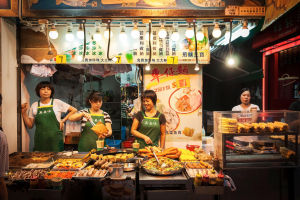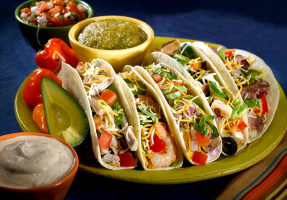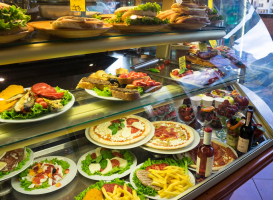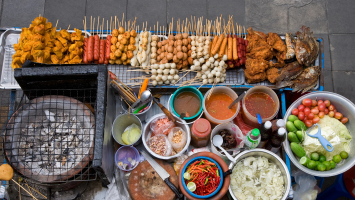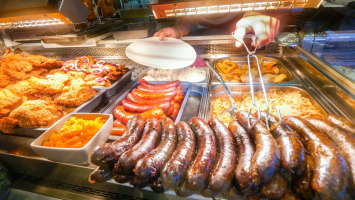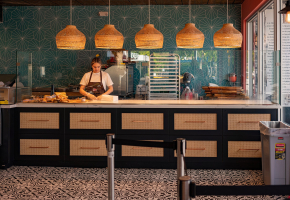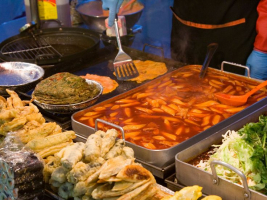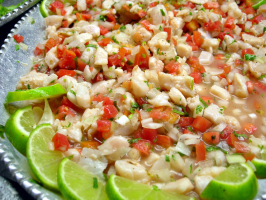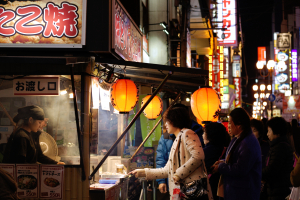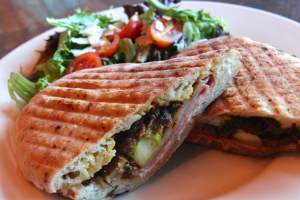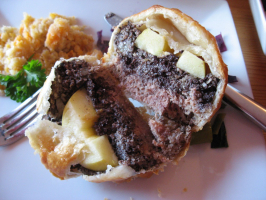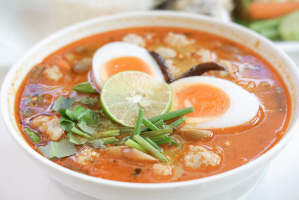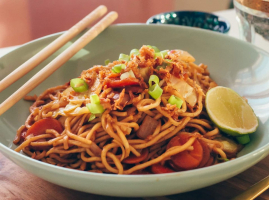Top 10 Best Street Food in Phuket
Street food in Phuket is a culinary journey like no other. The cuisine of this city has characteristics that cannot be found anywhere else. Toplist has ... read more...researched and selected the best street food in Phuket. Let's explore with Toplist!
-
Pad Thai is a popular and iconic Thai dish that has gained international recognition and popularity. It is a stir-fried noodle dish that typically combines rice noodles, eggs, tofu or shrimp, bean sprouts, crushed peanuts, lime wedges, and various seasonings.
The origins of Pad Thai can be traced back to Thailand's capital city, Bangkok, in the 1930s. It was created as part of a national campaign by the Thai government to promote domestic rice consumption. The dish was intended to showcase Thai ingredients and flavors while incorporating Chinese stir-fry techniques.
The basic preparation of Pad Thai involves stir-frying soaked rice noodles with a combination of ingredients. The noodles are typically softened in water before being added to a hot wok or skillet with oil. Eggs are scrambled alongside the noodles, and protein options like tofu or shrimp are often added. A flavorful sauce made from tamarind paste, fish sauce, sugar, and other seasonings is then added to the noodles, creating a unique sweet, sour, and savory flavor profile.
To complete the dish, bean sprouts, scallions, and crushed peanuts are commonly added for texture and freshness. Some variations of Pad Thai may include additional ingredients such as garlic, shallots, dried shrimp, or preserved radish.
Pad Thai is typically served with lime wedges on the side, allowing diners to squeeze fresh lime juice over the dish to enhance the flavors. It is also common to find condiments like chili flakes, fish sauce, or sugar on the table for individuals to adjust the taste according to their preferences.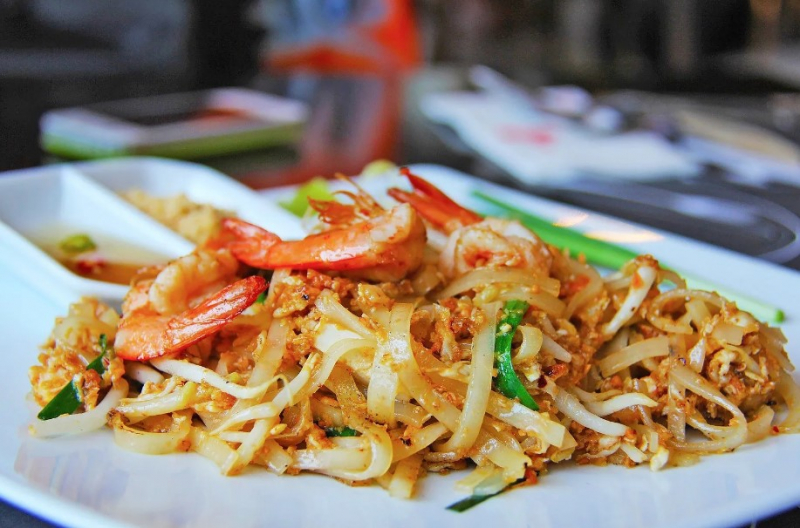
Screenshot via https://vi.hotels.com/go/thailand/best-phuket-thai-food 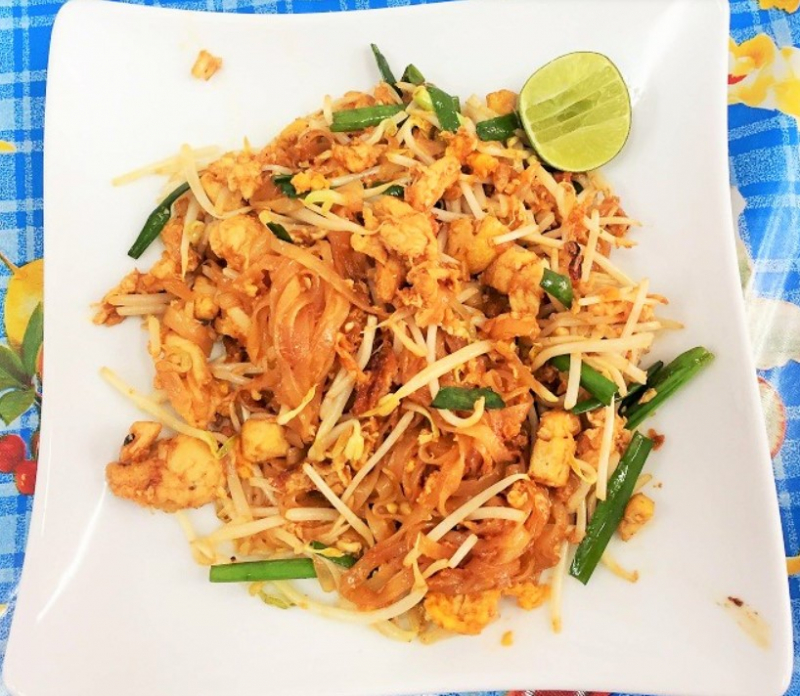
Screenshot via https://www.phuketeasythaicooking.com/15684654/pad-thai -
One of the best street foods in Phuket is pancake, which tastes great with chocolate, condensed milk, bananas, or Nutella. You won't have to worry about not finding them on your next vacation because they are all over the island.
While pancakes are not traditionally associated with Thai cuisine, they have gained popularity as a street food option in tourist areas, including Phuket. In Phuket, you can find street vendors and small food stalls offering a variety of pancakes to cater to the tastes of both locals and tourists.
The pancakes available in Phuket's street food scene often have a unique twist compared to traditional pancakes. They are typically thin and crepe-like, and they come with a variety of fillings and toppings. Some popular options include Nutella, fresh fruits like bananas or mangoes, shredded coconut, condensed milk, and sweet syrups.
Vendors prepare the pancakes by pouring a thin batter onto a hot griddle or flat pan. They spread the batter into a circular shape and cook it until it becomes golden brown and slightly crispy. Once cooked, the vendors add the desired fillings and toppings, fold the pancake, and serve it either rolled up or folded into a pocket.
These pancakes offer a delicious and convenient on-the-go snack or dessert option for locals and tourists exploring the streets of Phuket. They provide a sweet and satisfying treat that can be enjoyed any time of the day. Whether you're strolling along the beach or wandering through the bustling markets, you're likely to come across these tasty pancakes as part of Phuket's vibrant street food culture.
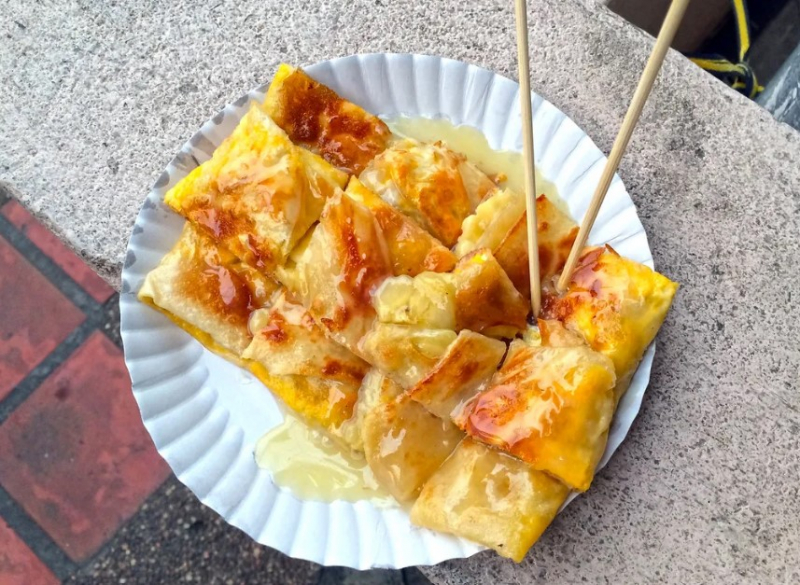
Screenshot via https://samurai-gourmet.com/2020/08/09/thai-banana-pancakes-sweet-street-food-in-phuket/ Alaa Starves -
In Phuket, noodle soup, known locally as "Kuey Tiaow," is a staple meal that may not be strictly Thai cuisine, but it is an integral aspect of daily existence in Thailand. Not just for lunch, dinner, or even breakfast, but almost every street will have small eateries and carts serving it all day and night. There are numerous ways to order meat and noodle soup, but the traditional version can be ordered simply by pointing at the kind of noodle you see in a cart..
The main component of Kuey Teow is flat rice noodles, which are similar to those used in Pad Thai. These noodles are typically stir-fried in a hot wok with a combination of ingredients such as soy sauce, garlic, vegetables, and protein like chicken, beef, shrimp, or tofu. The dish can be customized according to personal taste and dietary preferences.
In Malaysia and Singapore, Kuey Teow is often served in two popular variations: Char Kuey Teow and Soup Kuey Teow. Char Kuey Teow is a stir-fried version where the noodles are cooked with dark soy sauce, chili paste, bean sprouts, Chinese sausage, shrimp, and sometimes cockles. It is known for its smoky flavor and is often cooked in high heat to create a slightly charred taste.
Soup Kuey Tiaow, on the other hand, is a noodle soup dish. The rice noodles are served in a flavorful broth made from chicken or pork bones, along with ingredients like fish balls, sliced meat, vegetables, and sometimes a poached egg. It is a comforting and satisfying option, especially during rainy days or when seeking a lighter meal.In Thailand, Kway Teow is commonly known as Pad Thai, which is a stir-fried noodle dish made with rice noodles, eggs, tofu, bean sprouts, and a combination of sweet, sour, and savory flavors from tamarind paste, fish sauce, sugar, and lime. It is often garnished with crushed peanuts and fresh herbs.
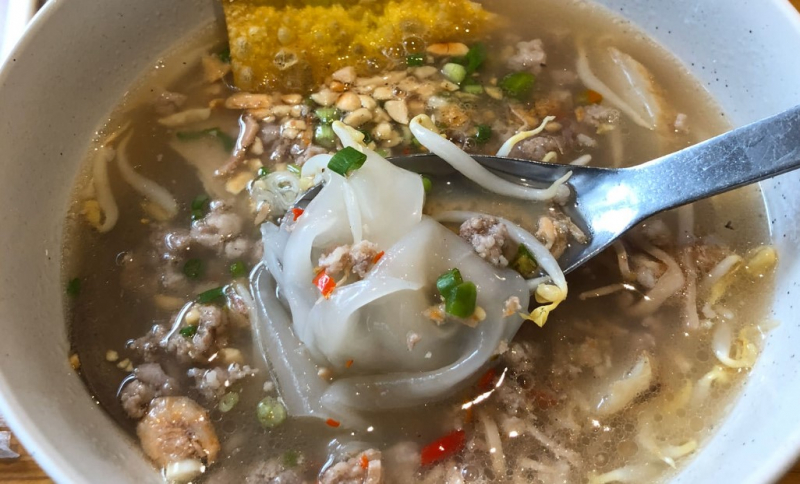
Screenshot via https://www.phuket101.net/noodle-soup-in-phuket/ 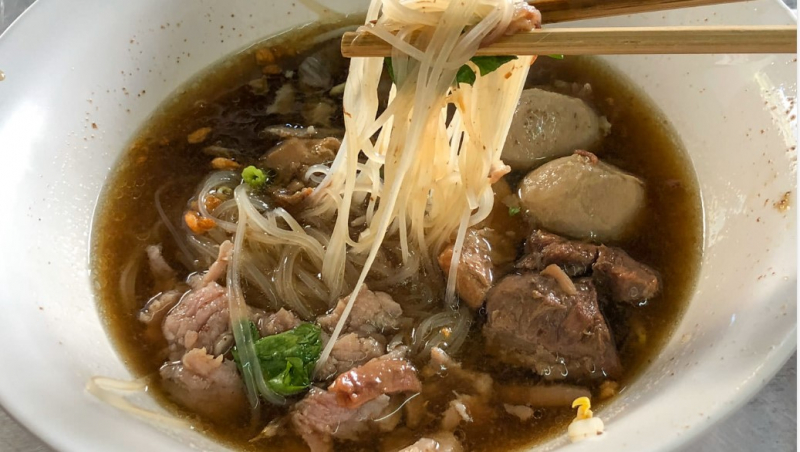
Screenshot via https://www.phuket101.net/noodle-soup-in-phuket/ -
Green papaya salad, or Som Tum, is a well-liked Thai dish that is praised for its flavorful and revitalizing qualities. It is one of the best street food in Phuket. It's a salad mainly composed of shredded green papaya mixed with other ingredients to make a nice harmony of flavors—sweet, sour, salty, and spicy.
A classic Thai dish that can be found practically anywhere. There are a few variations of som tum, some of which are extremes, like Som Tum Poo Pala, which is a very strong papaya salad with fermented crab. Som Tum Thai is the safest option, as it typically only includes green beans, tomatoes, papaya, and a varying amount of chillies. In most cases, the cook will estimate how spicy you can handle by looking at you if you don't tell them how spicy you want your som tum.
All the ingredients are typically combined in a mortar and pestle, where they are lightly pounded to release the flavors and allow the ingredients to meld together. Alternatively, a large mixing bowl can be used to toss the ingredients together.
Som Tum is often enjoyed as a standalone dish or as a side dish with other Thai dishes. It is commonly served with sticky rice and fresh vegetables. The combination of crisp green papaya, tangy lime juice, spicy chili, and other ingredients makes Som Tum a refreshing and delicious salad that showcases the vibrant flavors of Thai cuisine.
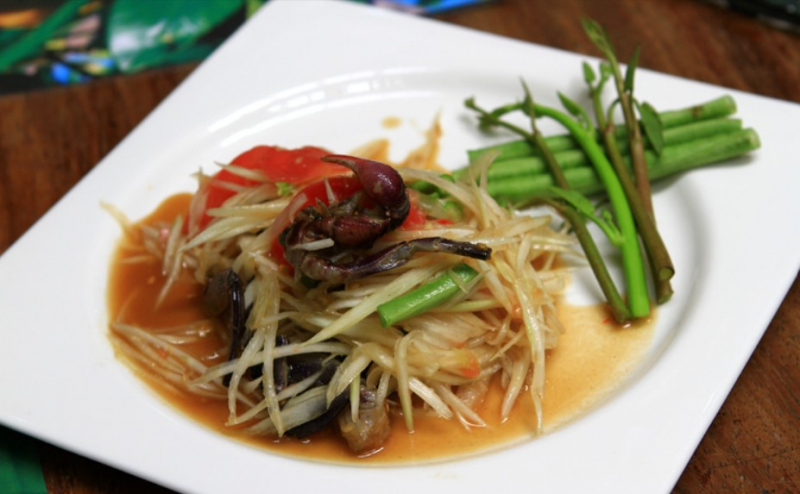
Screenshot via https://www.phuket101.net/som-tam/ 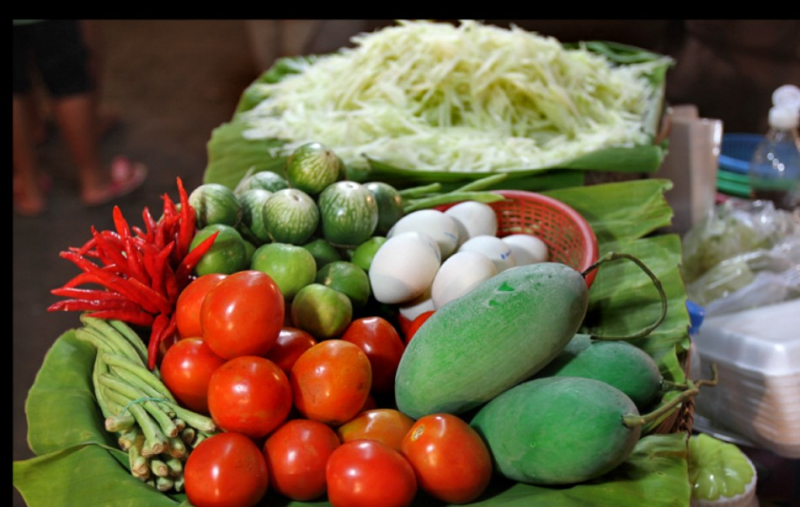
Screenshot via https://www.phuket101.net/som-tam/ -
Khao Pad Kai, also known as Thai Fried Rice with Chicken, is a flavorful and popular dish in Thai cuisine. It is a simple yet delicious stir-fried rice dish that combines fragrant jasmine rice with tender chicken, aromatic herbs, and savory seasonings.
To make Khao Pad Kai, cooked jasmine rice is stir-fried with diced chicken, along with a variety of ingredients to enhance the flavors. These can include onions, garlic, carrots, peas, and sometimes other vegetables like bell peppers or green beans. The dish is seasoned with soy sauce, fish sauce, oyster sauce, and a touch of sugar for a perfect balance of salty, sweet, and savory flavors.
Eggs are also a key component of Khao Pad Kai. They are typically beaten and scrambled in the wok before adding the rice and other ingredients. This adds a light and fluffy texture to the dish, as well as a beautiful golden color.
The dish is often garnished with fresh cilantro and served with cucumber slices and lime wedges on the side. It can be customized to individual preferences by adjusting the level of spiciness with chili sauce or chili flakes.
Khao Pad Kai is a versatile dish that can be enjoyed on its own as a complete meal or served alongside other Thai dishes. It is a staple in Thai street food stalls, restaurants, and households, loved for its simplicity and satisfying flavors. Whether you're a fan of Thai cuisine or new to it, Khao Pad Kai is a must-try dish that showcases the deliciousness of Thai fried rice.
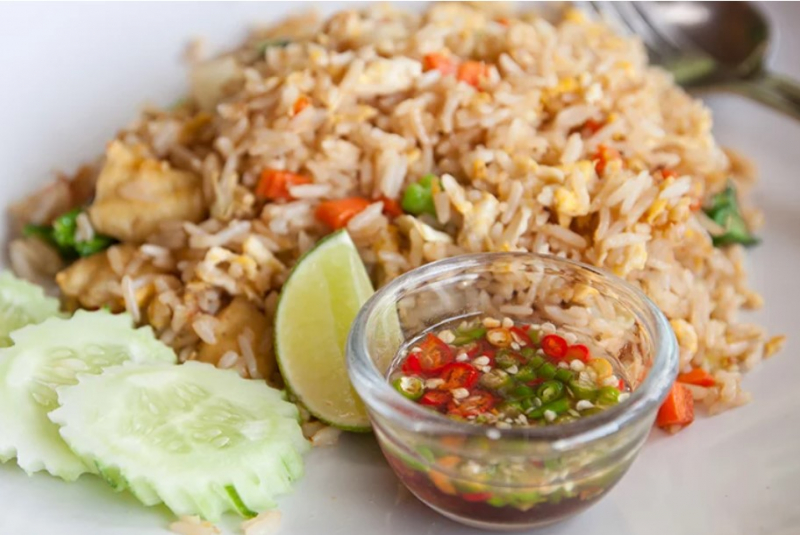
Screenshot via https://apollotourist.vn/mon-an-phai-thu-dia-chi-an-uong-ngon-o-phuket/ 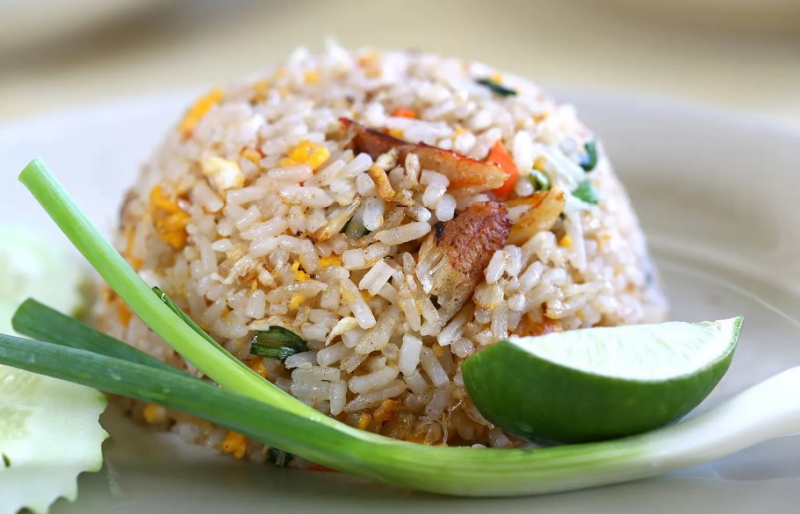
Screenshot via https://sg.hotels.com/go/thailand/best-phuket-thai-kids-food -
Kai Yang, also known as Gai Yang, is a popular Thai grilled chicken dish that is loved for its flavorful and aromatic qualities. It is a staple street food in Thailand and is often enjoyed as a main course or as part of a larger meal.
To prepare Kai Yang, a whole chicken or chicken parts are marinated in a mixture of Thai herbs and spices to infuse them with flavor. The marinade typically includes ingredients like garlic, lemongrass, cilantro roots, fish sauce, soy sauce, oyster sauce, lime juice, sugar, and ground black pepper. The chicken is left to marinate for a few hours or overnight, allowing the flavors to penetrate the meat.
Once marinated, the chicken is grilled until it is cooked through and has a slightly charred and smoky flavor. It is often basted with marinade during the grilling process to enhance the taste and keep the meat moist. The result is a juicy and tender chicken with a delightful blend of savory, tangy, and aromatic flavors.
Traditionally, Kai Yang is cooked over charcoal or an open flame, which imparts a smoky and charred flavor to the chicken. The chicken is grilled until it is cooked through and has a crispy and golden skin. Basting the chicken with the marinade during the grilling process helps to keep the meat moist and adds a layer of flavor.
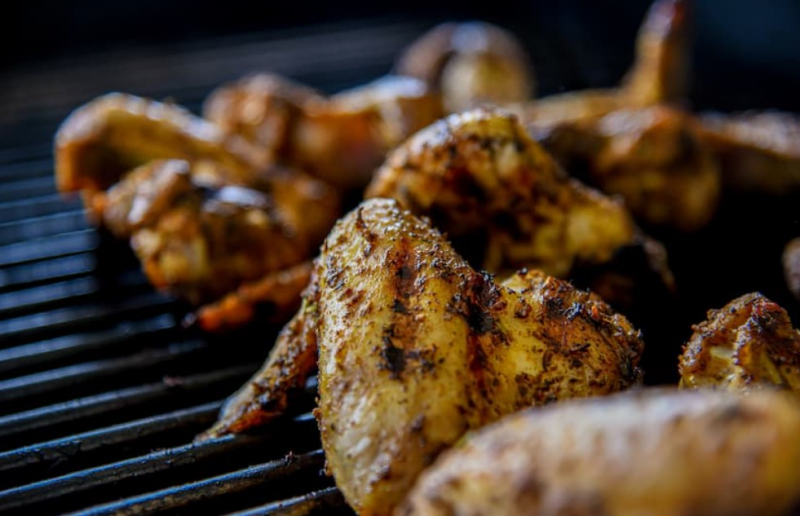
Screenshot via https://www.aleenta.com/blog/make-your-own-kai-yang-thai-grilled-chicken-home/ 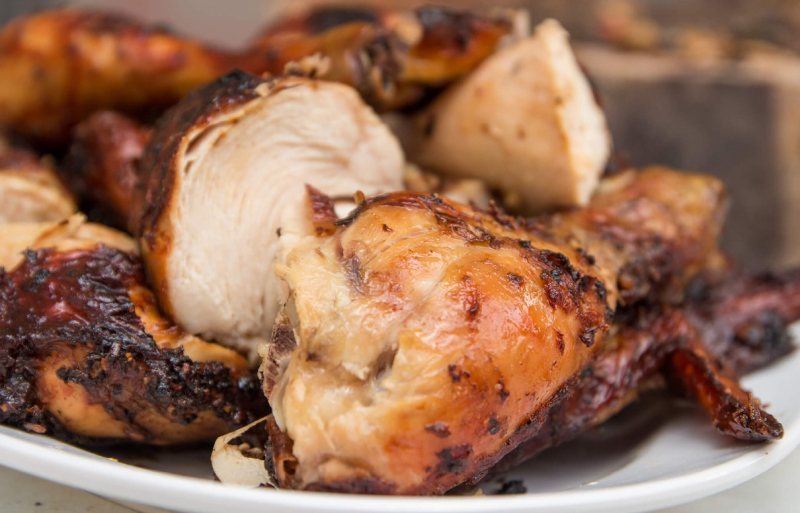
Screenshot via https://www.eatingthaifood.com/authentic-thai-grilled-chicken-recipe-gai-yang/ -
Moo Ping, also known as Pork Satay, is a popular street food dish in Thailand that is loved for its tender and flavorful pork. To make Moo Ping, pork meat, typically from the tenderloin or pork shoulder, is marinated in a mixture of Thai spices and sauces to enhance its taste. The marinade often includes ingredients such as garlic, cilantro roots, soy sauce, fish sauce, oyster sauce, palm sugar, ground black pepper, and sometimes a touch of coconut milk for added richness.
After marinating for a few hours or overnight, the pork is threaded onto skewers, either bamboo or metal, and grilled over charcoal or an open flame. The grilling process imparts a smoky and slightly charred flavor to the pork while keeping it juicy and tender. The skewers are turned regularly to ensure even cooking and to achieve a desirable caramelized outer layer.
Moo Ping is commonly served with various accompaniments and dipping sauces. Sticky rice, cucumber slices, and fresh vegetables are popular choices to complement the flavors of the grilled pork. Nam Jim Jaew, a spicy and tangy dipping sauce made with chilies, fish sauce, lime juice, and roasted rice powder, is often served alongside to add an extra kick of flavor. This is one of the best street food in Phuket.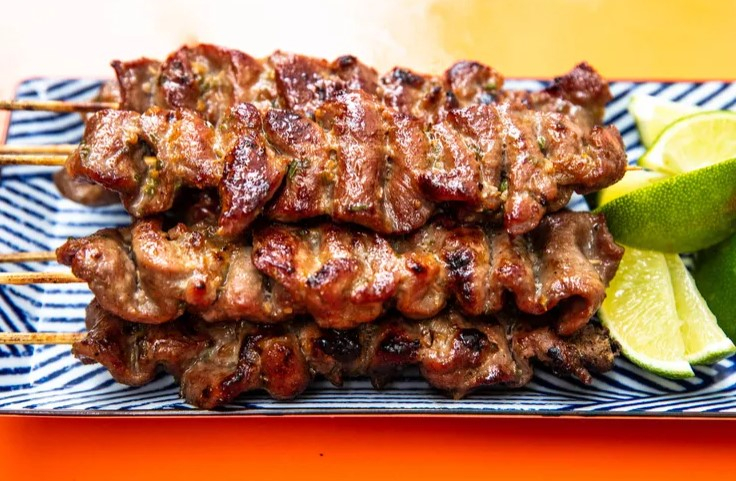
Screenshot via https://www.seriouseats.com/thai-style-grilled-pork-skewers-moo-ping 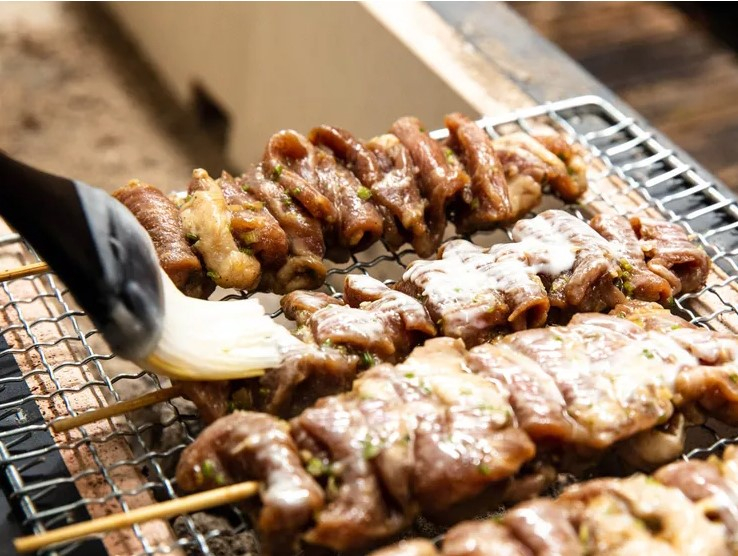
Screenshot via https://www.seriouseats.com/thai-style-grilled-pork-skewers-moo-ping -
Khao Ka Moo, also known as Thai Braised Pork Leg Rice, is a popular street food dish in Thailand. It is a hearty and flavorful dish that features tender and succulent pork leg simmered in a rich and aromatic broth, served over rice.
To prepare Khao Ka Moo, pork leg or pork hock is braised in a flavorful mixture of soy sauce, dark soy sauce, star anise, cinnamon, garlic, ginger, palm sugar, and sometimes additional spices and herbs. The pork is simmered in this fragrant broth for several hours until it becomes tender and infused with the flavors of the spices.
Once the pork is cooked to perfection, it is typically sliced into thick pieces or served as a whole leg. The dish is then assembled by placing a generous portion of the braised pork over a bed of steamed jasmine rice. The flavorful broth from the braising process is often ladled over the rice to further enhance its taste.
Khao Ka Moo is often accompanied by a variety of condiments and garnishes. These can include pickled mustard greens, boiled eggs, blanched Chinese broccoli, and fried garlic. Additionally, a small bowl of the braising liquid may be served on the side for diners to adjust the seasoning according to their preferences.
The combination of tender and flavorful braised pork, aromatic rice, and the assortment of condiments creates a satisfying and comforting meal. Khao Ka Moo is a beloved dish in Thailand, both for its delicious taste and its affordability. It is often found at street food stalls and local eateries, where it is enjoyed by locals and visitors alike.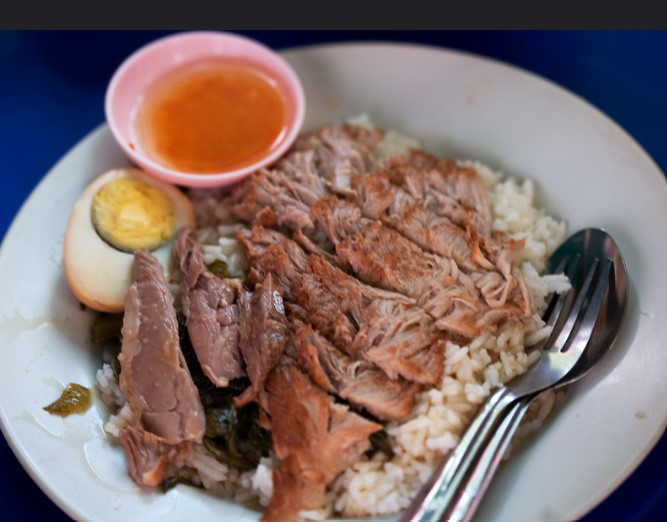
Screenshot via https://www.flickr.com/photos/haynes/1248454050 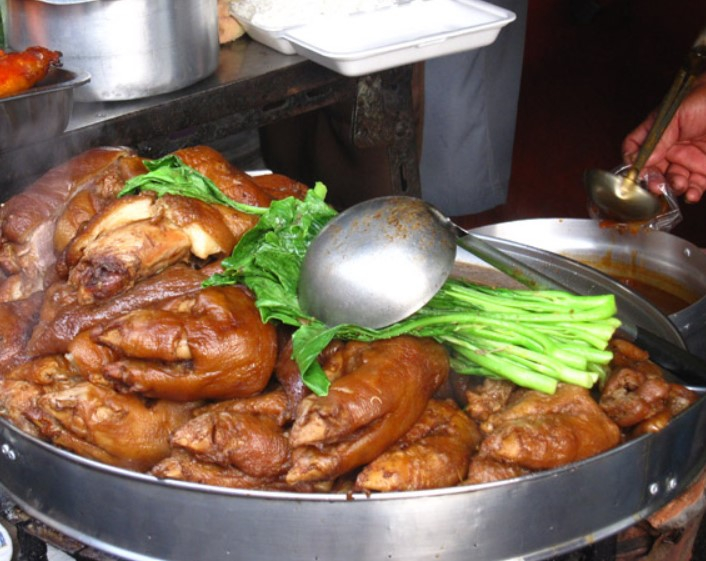
Screenshot via https://migrationology.com/wp-content/uploads/2010/03/khao-ka-moo.jpg -
Pad See Ew is indeed a popular and delicious street food dish in Thailand, including Phuket. It is a stir-fried noodle dish that is commonly found in Thai cuisine. The name "Pad See Ew" translates to "fried soy sauce" in English, which gives you an idea of its key flavor profile. It is one of the best street food in Phuket
The dish typically consists of wide rice noodles stir-fried with a combination of protein, such as chicken, beef, or shrimp, along with vegetables like Chinese broccoli (gai lan) or bok choy. The noodles are cooked until they are slightly charred and have a nice chewy texture. The sauce used in Pad See Ew is made from a mixture of soy sauce, oyster sauce, garlic, and sometimes a touch of sugar or vinegar to balance the flavors.
Pad See Ew is known for its savory and slightly sweet taste. It is often enjoyed with a sprinkle of chili flakes or a drizzle of chili sauce to add some heat if desired. The dish is usually served hot and fresh from a street food stall, with vendors preparing it in large woks over high heat, ensuring that the noodles are cooked quickly and retain their chewiness.
When visiting Phuket or other parts of Thailand, trying Pad See Ew from a street food vendor is a must-do culinary experience. It offers a delightful combination of flavors and textures that make it a favorite among locals and tourists alike.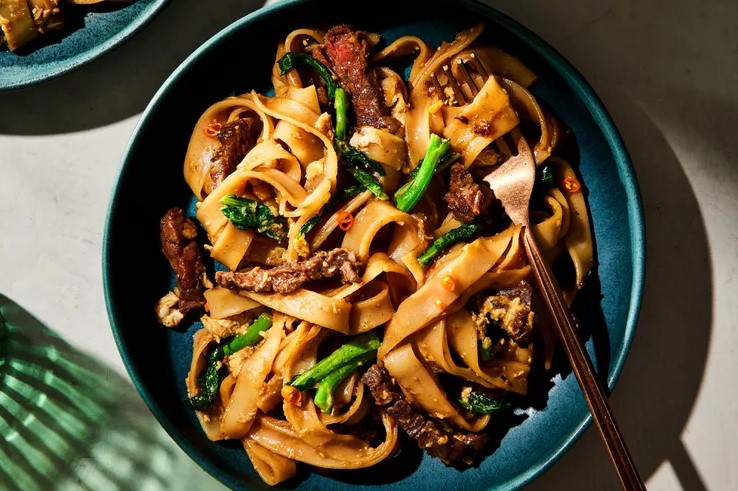
Screenshot via https://www.foodandwine.com/pad-see-ew-7559639 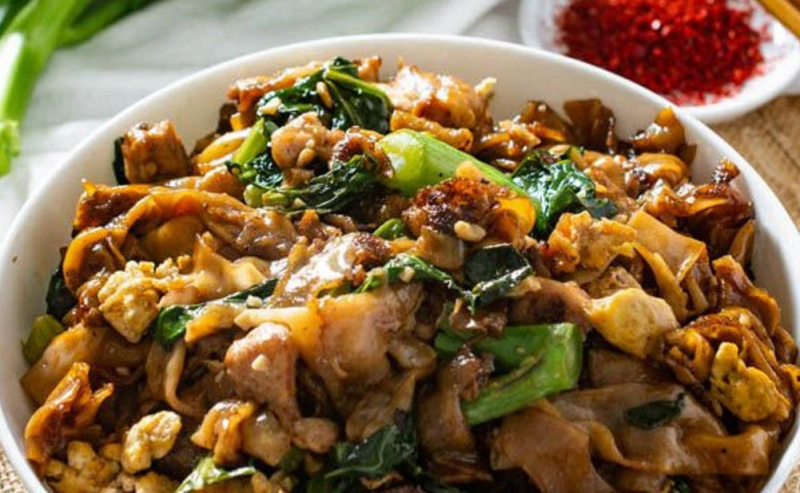
Screenshot via https://www.sidechef.com/recipes/15089/pad_see_ew_thai_stir_fried_wide_rice_noodles/ -
Kanom Jeen consists of fresh rice noodles served with a variety of flavorful curries and toppings. Kanom Jeen is a versatile and customizable dish that can be enjoyed for breakfast, lunch, or dinner.
The noodles in Kanom Jeen are made from fermented rice, resulting in a slightly sour and tangy taste. They have a soft and springy texture that pairs well with the rich and aromatic curries. The curries can vary, but some common options include green curry, red curry, and yellow curry.
The curries are typically made with a combination of herbs, spices, and ingredients such as lemongrass, galangal, garlic, shallots, chili peppers, and coconut milk. They are cooked until the flavors are well-developed and the consistency is thick and creamy. The curries are then spooned over the rice noodles, creating a delightful combination of flavors and textures.
To enjoy Kanom Jeen, diners typically assemble their own bowls by adding a portion of noodles, topping them with their choice of curry or sauce, and then adding additional condiments such as fresh herbs, bean sprouts, pickled vegetables, and boiled eggs. The dish is usually eaten with a spoon and fork or chopsticks.
Kanom Jeen is a versatile dish that can be customized to suit individual preferences. It is known for its vibrant flavors, combination of textures, and the wide variety of toppings and sauces available. It is a beloved and popular dish in the region, often enjoyed for breakfast or lunch.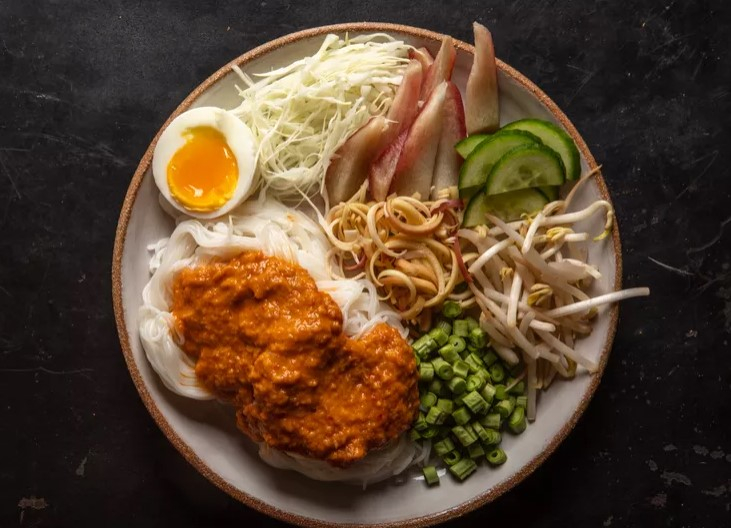
Screenshot via https://www.seriouseats.com/kanom-jeen-nam-ya-thai-fish-curry-rice-noodles-5199040 Luke Martin












